1. How Passive Fire Protection Differs from Active Fire Protection
When it comes to fire safety, not all solutions are created equal. There are two main types:
- Active Fire Protection: These are systems that require an action to operate like sprinklers, alarms, or extinguishers. They react to a fire once it's detected.
- Passive Fire Protection: These are built-in safety measures that contain or slow the spread of fire without needing any activation. They work silently in the background from the moment a building is occupied.
2. Why Passive Fire Protection Matters
Passive systems are your building’s first line of defense. They compartmentalize spaces, contain fire and smoke,
and provide more time for evacuation. They do not rely on power, people, or electronics, making them extremely
reliable in real-life fire emergencies.
3. Examples of Passive vs Active Protection
Passive fire protection includes:
- Fire-rated doors and partitions
- Intumescent pipe collars
- Fire-resistant grilles and dampers
- Sealants and mastics that close off penetrations
Active fire protection includes:
- Sprinkler systems
- Smoke detectors
- Fire extinguishers
- Alarm and suppression systems
4. Key Passive Fire Protection Systems You Can Use
A. Compartmentation & Fire-Rated Partitions
Fire-resistant walls, ceilings, and floors that contain fire to one area of a building.
B. Fire Doors
These slow the spread of flames and smoke, and preserve evacuation routes during a fire.
C. Firestopping Products
Seal gaps around pipes, ducts, or cables to maintain the fire rating of a wall or floor.
Featured Products:
- Astroflame® Intumescent Pipe Collars
- Astro‑Flame Acoustic Intumescent Mastic
D. Intumescent Grilles & Fire Dampers
Provide ventilation in normal conditions, then expand under heat to block fire and smoke.
Available at Premier:
- Envirograf® Intumescent Grilles
E. Intumescent Coatings
Protect steel and structural elements from heat damage by expanding during fire exposure.
5. What Makes Passive Protection Different?
- Passive systems don’t need power or sensors to work, they are always in place.
- They work by containing and slowing fire rather than actively suppressing it.
- They require minimal maintenance and are often installed during construction.
- Active systems, by contrast, require human or electronic activation to function.
- If active systems fail (e.g., no water, power loss), passive measures are the last line of defense.
6. Product Spotlight: Premier Passive Fire Products
- Astroflame® Intumescent Pipe Collars
Prevent the spread of fire through plastic pipes by expanding and sealing the opening.
- Astro‑Flame Intumescent Mastic
Provides a flexible, easy-to-apply solution to seal joints and service gaps.
- Envirograf® Intumescent Grilles
Maintain airflow in day-to-day conditions, then seal shut when exposed to heat.
These products are certified, tested, and available through Premier Passive Fire Products with support for installation and trade inquiries.
Need help finding this?
Main Keywords:
- passive fire protection vs active fire protection
- what is passive fire protection
- passive fire protection products
Informational Keywords:
- difference between active and passive fire protection
- how intumescent grilles work
- firestopping pipe collars UK
Product-Oriented:
- Astroflame intumescent pipe collars
- Envirograf intumescent grilles
- passive fire protection sealant
8. Final Thoughts
Passive fire protection is critical for building safety. It works automatically, without needing to be activated, and plays a vital role in slowing fire and smoke spread. While active fire systems like sprinklers help suppress a blaze, passive systems give people time to escape and buy time for emergency services. With certified solutions from Premier Passive Fire Products, you're choosing proven protection that meets UK compliance standards. Don't wait for a fire to act. Build safety into the structure itself.
Explore our full range of certified fire stopping, intumescent seals, and ventilation products.
Visit Premier Passive Fire Products today for expert support, trade pricing, and next-day delivery options.

